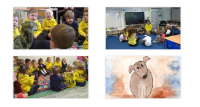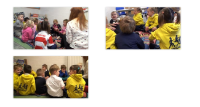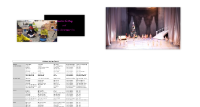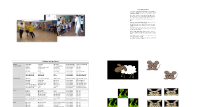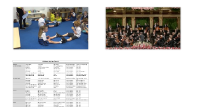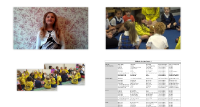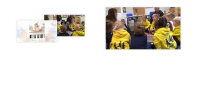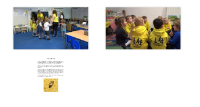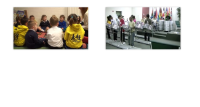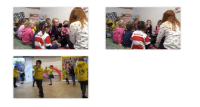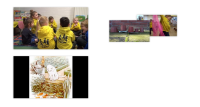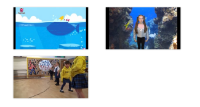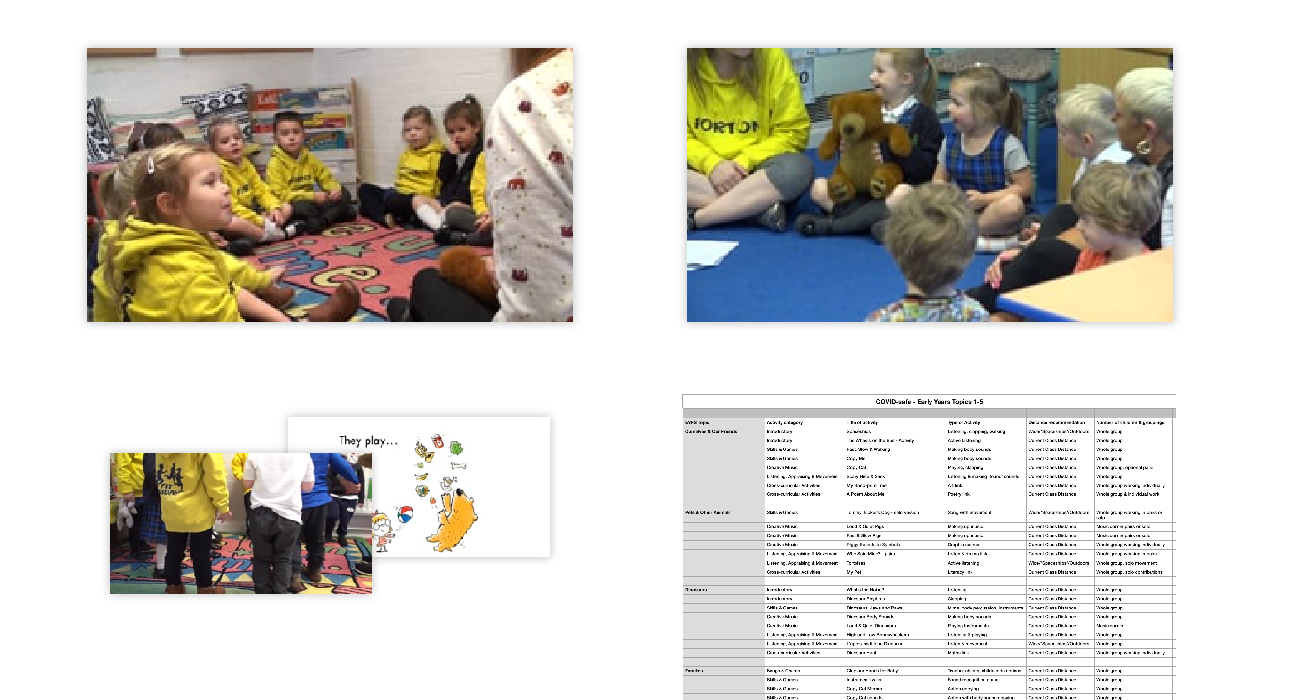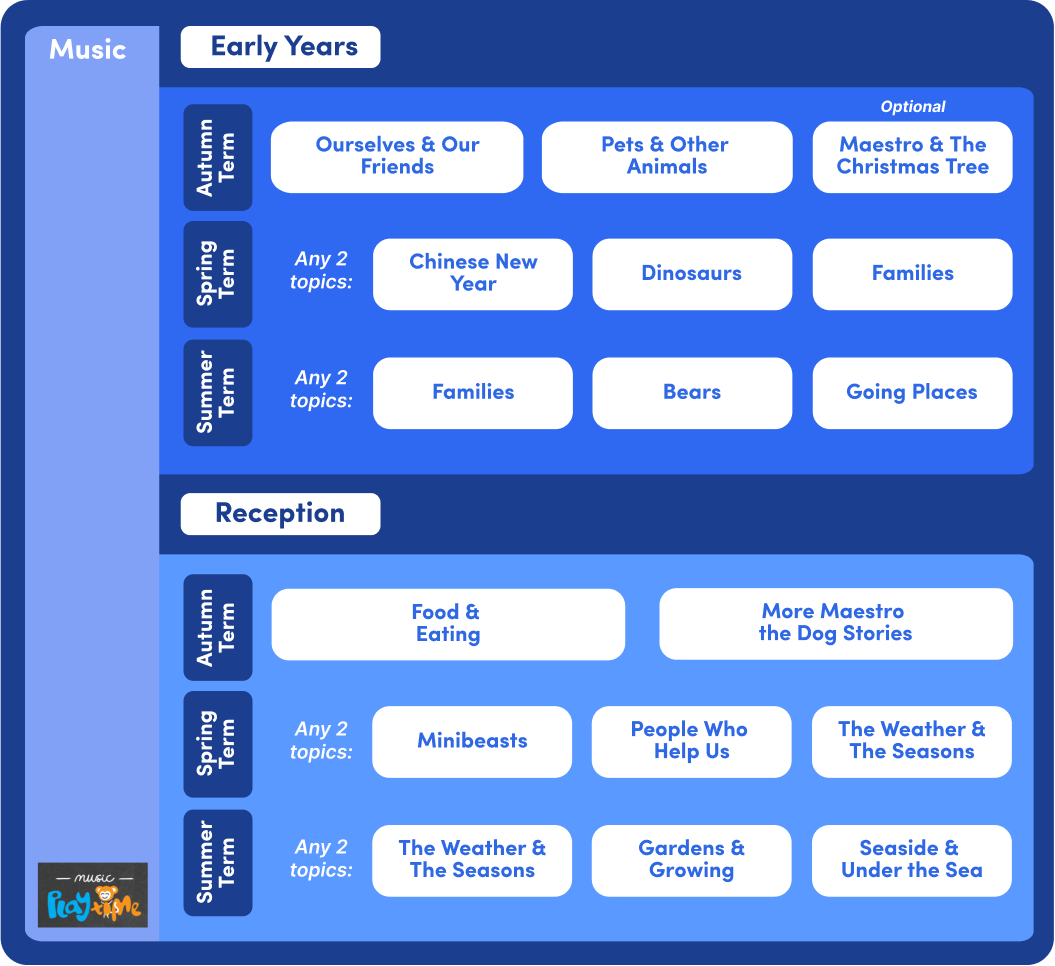Bears Level: Early Years
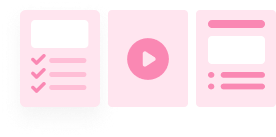
The Three Bears (pitch)
Tell the story of Goldilocks and the Three Bears. You could tell this from memory or use the suggested story book. Whichever way you choose, it would be great if you could differentiate each character strongly by high, low or medium pitch voices. Afterwards you could ask the children about the three bears' different voices:
- Which bear had the highest voice? The children could think of of words to describe baby bear's high voice: high is like a cat's mew, a tweeting bird, a tinkling bell.
- Low is like a dog's growl, grumbling thunder, a big drum … the children could think of more.
Tip - High and low pitch are often confused with loud and quiet volume, like the TV.
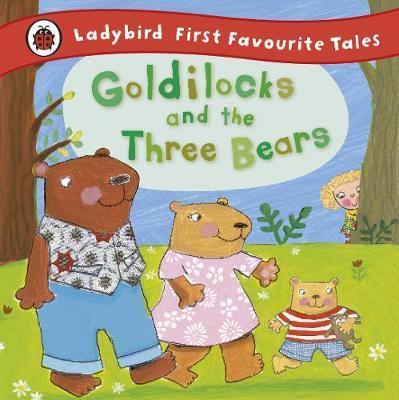
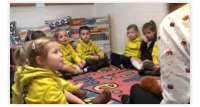
My Little Bear
This is a counting song to the tune of Alice the Camel.
- My little bear has one nose
- My little bear has one nose
- My little bear has one nose
- I love my little bear
- __
- My little bear has two eyes
- __
- My little bear has two ears
- __
- My little bear has four legs
- __
- My little bear has four paws
We don't sing all the verses here because it was the first time the children had sung My Little Bear but you can listen to it all here:
Walking speed (tempo)
After the song, I took the opportunity to add on an activity that demonstrated slow speed and walking speed by passing the bear round the circle.
High & Low Bears Chant (pitch)
To encourage the children to control the pitch of their voices, recognising high and low, point to baby bear and mummy bear in the picture, switching from one to the other. Everyone chants:
- Baby Bear are you there? (high voice)
- Mummy Bear are you there? (lower voice)

What would Daddy Bear sound like? Why do bigger bears have lower voices? The children could compare chime bars - the longest bars have the lowest pitch.
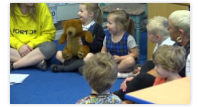
Bounce the Teddy (pulse, pitch)
You need one teddy for this passing game. Children love taking their turn at bouncing the teddy and you'll see that some children will naturally bounce the teddy in time with the pulse of the song. The tune is Twinkle Twinkle Little Star but we began by chanting the words and helping the children to bounce the teddy at the right time and then pass it on.
High and Low Bears (pitch)
You'll need two chime bars, the smallest and the largest to give a significant difference in pitch. Play each chime bar for a few seconds, alternating between the two as the children move around the room into a space, putting their hands high in the air for high sounds, and crawling low down for low sounds. It's good to give the children the correct words, high pitch and low pitch, when you first demonstrate what to do.
You could play to the rhythm, in your head, of any phrase (eg Walking like a teddy bear). It's important to play at the same speed and loudness to avoid confusion over what high and low pitch means.

High and low Sounds (pitch, dynamics)
Put out some pairs of musical instruments and pairs of everyday objects that can make a high or low sound eg big/small chime bars, big drum/little bells, little plastic bottle/big plastic bottle, big kitchen pan, little kitchen pan. Remember to put out beaters too. These are things that you could ask the children to explore:
- Which are higher/lower in pitch?
- Which size makes the highest/lowest sounds?
- Put them in order of high to low.
- Do the high-sounding things sound louder too, or not? (Larger = greater capacity for loudness, but can also make quiet sounds. Small = lesser capacity for loud sounds.)
Make a sequence
In pairs, or in a small supervised group, children play:
- High / low / high
Then change the sequence to:
- Low / high / low
Hint - It's really helpful if you model the activity first - as you play the high note, sing: This is a high note, then as you play the low note, sing: This is a low note. Children can easily distinguish high from low pitch, even as babies, but they need lots of opportunities to understand the words high and low in relation to pitch. High and low in music always describes pitch, never volume.
More sequences (dynamics, timbre, tempo, duration)
What other sequences could the children make up? They could experiment with using different instruments, or body sounds, for sequences focusing on these elements:
- Loud / quiet / loud (dynamics eg using drums)
- scratchy / hollow / scratchy (timbre eg using found objects)
- fast / slow / fast (tempo eg using claves)
- long / short / long (duration - you'll need an instrument that can make a long sound, eg jingle bells)
Here's an example of hollow / scratchy / hollow using found sounds:
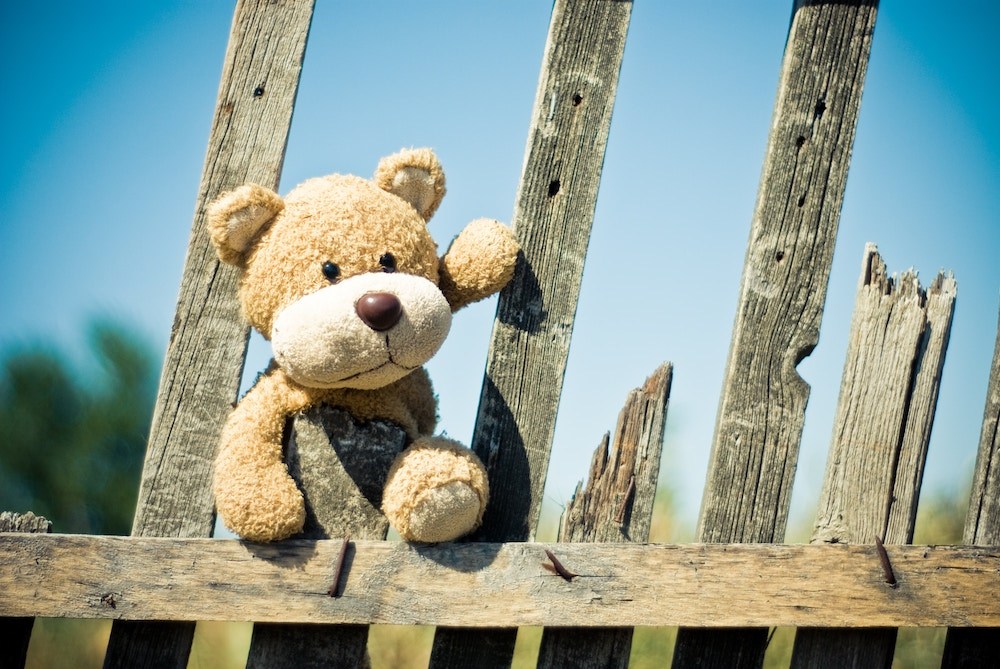
Graphic Scores (structure)
This is an ideal opportunity for the children to make graphic scores of their sequences, using whatever medium you choose. This is Holly's graphic score of Loud Quiet Loud.
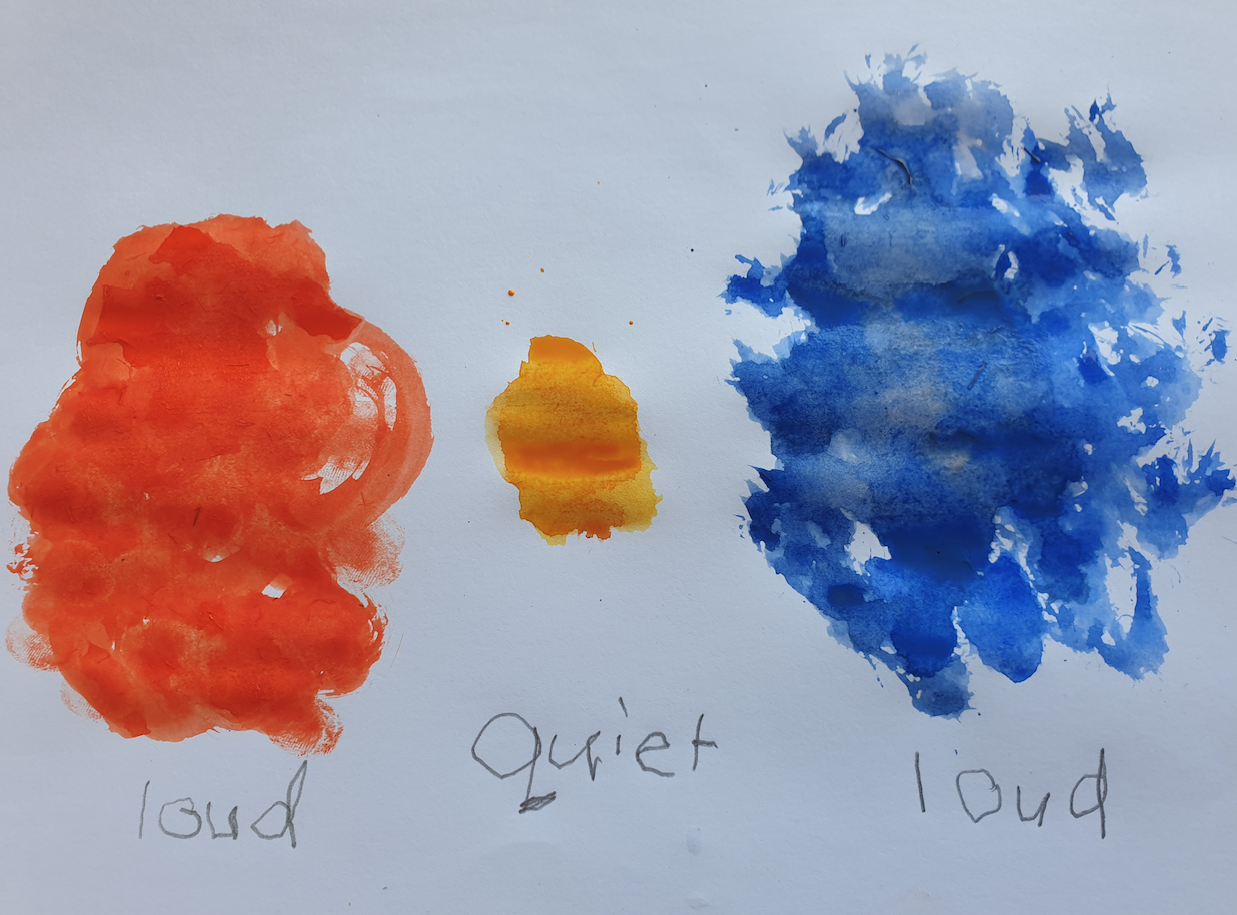
Holly wrote the words, loud quiet loud on her score but, if the scores have no writing, it's fun for the pairs of children to swap and try to re-create the original meaning in music. You may be surprised at how accurate they are!
Teddy Day (pitch)
Every child could bring in a teddy on an agreed day (please have spares in case anyone forgets or doesn't have a teddy). Ask the children, using your sing-song voice, to tell their teddies what to do today using their sing-song voices. At the end of the day, each child makes up a little lullaby to put teddy to bed. You could suggest the words:
- Sleepy time for teddy bears
- Time to go to bed
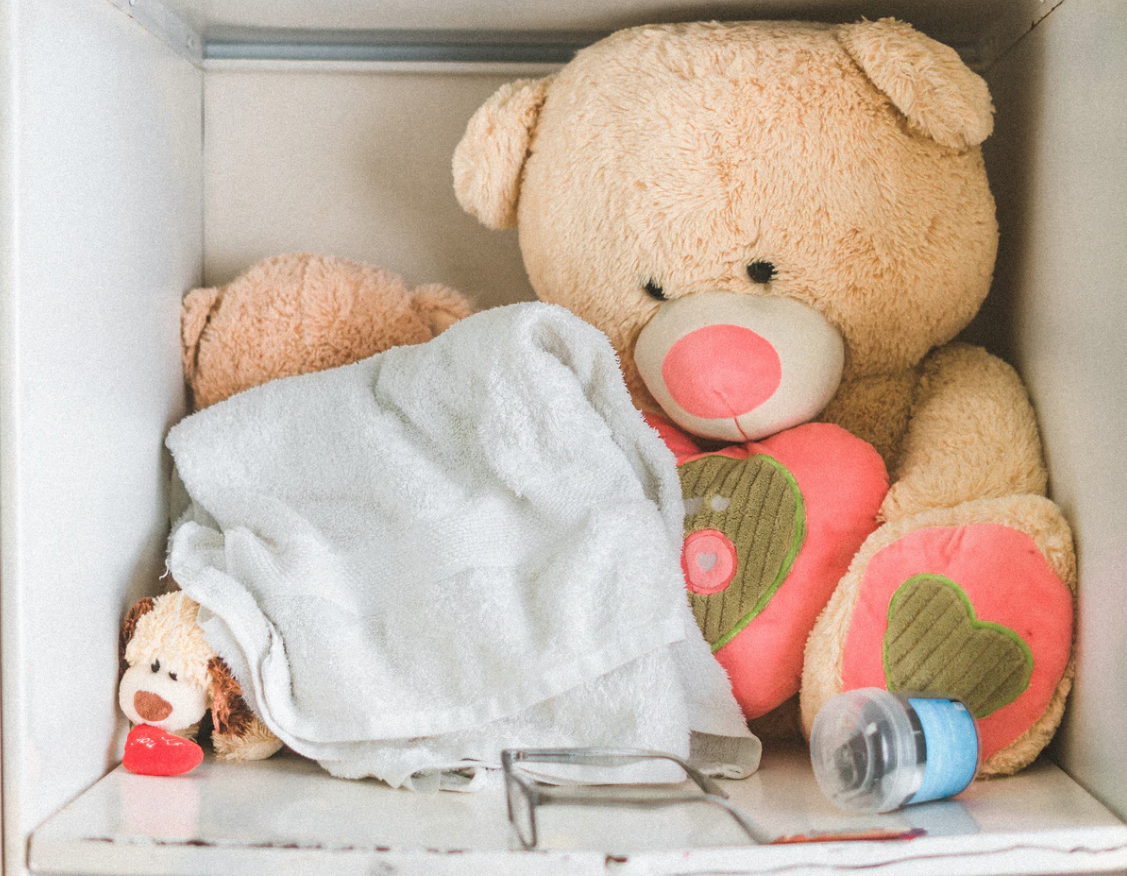
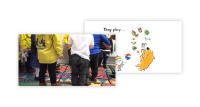
Walking Like a Teddy Bear (pulse, structure)
You could teach this activity using the first me then you method and then introduce a teddy bear for demonstrating the movements, or you could simply do it and have the children join in and copy you. The way in which this begins to teach structure is by linking each line with a different movement.
- Walking like a teddy bear
- Touch the ground
- Wave your arms
- Jump in the air
- Walking like a teddy bear
I am Bear (rhythm)
Just for fun (and why not?). This music is in the style of a rap.
Which bear? (pitch, timbre)
Show the children and demonstrate the sound of three completely different-sounding instruments, each representing a different bear eg low-pitched drum for Daddy Bear, shakers for Mummy Bear and finger cymbals for Baby Bear. Next demonstrate or explain what the children have to do when they hear each 'bear':
- Daddy Bear: make a big star shape, standing tall
- Mummy Bear: sit down
- Baby Bear: curl into a ball
All the children walk round the room into a space, as you sing-song three times: Which bear will it be? Then everyone has to stop, listen, and make the right shape.
Quick and Slow Bears (tempo)
All walk round the room into a space. This time the teacher plays a single instrument at a slow, medium or quick tempo - to do this, try saying to yourself: slow ... slow ..., walking-walking, running-running-running-running. The children move at the speed of the playing. If the sound stops, they become a 'frozen bear', completely still until the sound begins again.

Paper Plate Bear (art)
You can used a variety of material, depending on the bear you want. Each child needs a selection of these:
- one paper plate
- tissue paper (brown bears and noses
- cotton wool balls (polar bear)
- eyes (felt circles, tissue paper or bought 'eyes')
- glue
Here's Lindsay's polar bear!
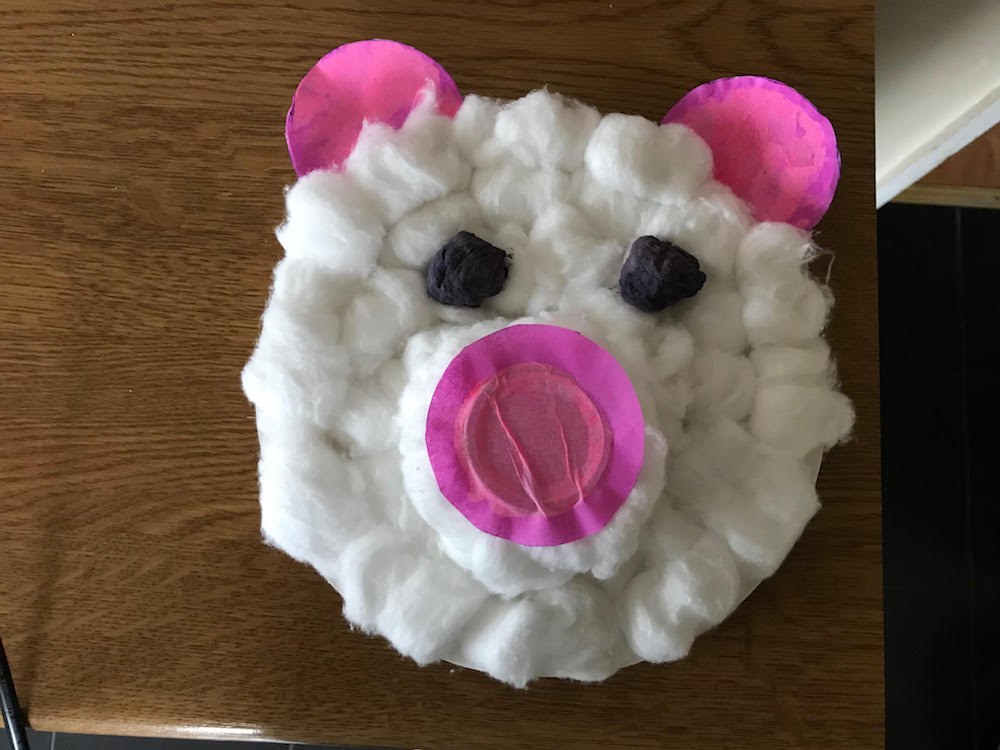


The Three Bears (pitch)
Tell the story of Goldilocks and the Three Bears. You could tell this from memory or use the suggested story book. Whichever way you choose, it would be great if you could differentiate each character strongly by high, low or medium pitch voices. Afterwards you could ask the children about the three bears' different voices:
- Which bear had the highest voice? The children could think of of words to describe baby bear's high voice: high is like a cat's mew, a tweeting bird, a tinkling bell.
- Low is like a dog's growl, grumbling thunder, a big drum … the children could think of more.
Tip - High and low pitch are often confused with loud and quiet volume, like the TV.


My Little Bear
This is a counting song to the tune of Alice the Camel.
- My little bear has one nose
- My little bear has one nose
- My little bear has one nose
- I love my little bear
- __
- My little bear has two eyes
- __
- My little bear has two ears
- __
- My little bear has four legs
- __
- My little bear has four paws
We don't sing all the verses here because it was the first time the children had sung My Little Bear but you can listen to it all here:
Walking speed (tempo)
After the song, I took the opportunity to add on an activity that demonstrated slow speed and walking speed by passing the bear round the circle.
High & Low Bears Chant (pitch)
To encourage the children to control the pitch of their voices, recognising high and low, point to baby bear and mummy bear in the picture, switching from one to the other. Everyone chants:
- Baby Bear are you there? (high voice)
- Mummy Bear are you there? (lower voice)

What would Daddy Bear sound like? Why do bigger bears have lower voices? The children could compare chime bars - the longest bars have the lowest pitch.

Bounce the Teddy (pulse, pitch)
You need one teddy for this passing game. Children love taking their turn at bouncing the teddy and you'll see that some children will naturally bounce the teddy in time with the pulse of the song. The tune is Twinkle Twinkle Little Star but we began by chanting the words and helping the children to bounce the teddy at the right time and then pass it on.
High and Low Bears (pitch)
You'll need two chime bars, the smallest and the largest to give a significant difference in pitch. Play each chime bar for a few seconds, alternating between the two as the children move around the room into a space, putting their hands high in the air for high sounds, and crawling low down for low sounds. It's good to give the children the correct words, high pitch and low pitch, when you first demonstrate what to do.
You could play to the rhythm, in your head, of any phrase (eg Walking like a teddy bear). It's important to play at the same speed and loudness to avoid confusion over what high and low pitch means.

High and low Sounds (pitch, dynamics)
Put out some pairs of musical instruments and pairs of everyday objects that can make a high or low sound eg big/small chime bars, big drum/little bells, little plastic bottle/big plastic bottle, big kitchen pan, little kitchen pan. Remember to put out beaters too. These are things that you could ask the children to explore:
- Which are higher/lower in pitch?
- Which size makes the highest/lowest sounds?
- Put them in order of high to low.
- Do the high-sounding things sound louder too, or not? (Larger = greater capacity for loudness, but can also make quiet sounds. Small = lesser capacity for loud sounds.)
Make a sequence
In pairs, or in a small supervised group, children play:
- High / low / high
Then change the sequence to:
- Low / high / low
Hint - It's really helpful if you model the activity first - as you play the high note, sing: This is a high note, then as you play the low note, sing: This is a low note. Children can easily distinguish high from low pitch, even as babies, but they need lots of opportunities to understand the words high and low in relation to pitch. High and low in music always describes pitch, never volume.
More sequences (dynamics, timbre, tempo, duration)
What other sequences could the children make up? They could experiment with using different instruments, or body sounds, for sequences focusing on these elements:
- Loud / quiet / loud (dynamics eg using drums)
- scratchy / hollow / scratchy (timbre eg using found objects)
- fast / slow / fast (tempo eg using claves)
- long / short / long (duration - you'll need an instrument that can make a long sound, eg jingle bells)
Here's an example of hollow / scratchy / hollow using found sounds:

Graphic Scores (structure)
This is an ideal opportunity for the children to make graphic scores of their sequences, using whatever medium you choose. This is Holly's graphic score of Loud Quiet Loud.

Holly wrote the words, loud quiet loud on her score but, if the scores have no writing, it's fun for the pairs of children to swap and try to re-create the original meaning in music. You may be surprised at how accurate they are!
Teddy Day (pitch)
Every child could bring in a teddy on an agreed day (please have spares in case anyone forgets or doesn't have a teddy). Ask the children, using your sing-song voice, to tell their teddies what to do today using their sing-song voices. At the end of the day, each child makes up a little lullaby to put teddy to bed. You could suggest the words:
- Sleepy time for teddy bears
- Time to go to bed


Walking Like a Teddy Bear (pulse, structure)
You could teach this activity using the first me then you method and then introduce a teddy bear for demonstrating the movements, or you could simply do it and have the children join in and copy you. The way in which this begins to teach structure is by linking each line with a different movement.
- Walking like a teddy bear
- Touch the ground
- Wave your arms
- Jump in the air
- Walking like a teddy bear
I am Bear (rhythm)
Just for fun (and why not?). This music is in the style of a rap.
Which bear? (pitch, timbre)
Show the children and demonstrate the sound of three completely different-sounding instruments, each representing a different bear eg low-pitched drum for Daddy Bear, shakers for Mummy Bear and finger cymbals for Baby Bear. Next demonstrate or explain what the children have to do when they hear each 'bear':
- Daddy Bear: make a big star shape, standing tall
- Mummy Bear: sit down
- Baby Bear: curl into a ball
All the children walk round the room into a space, as you sing-song three times: Which bear will it be? Then everyone has to stop, listen, and make the right shape.
Quick and Slow Bears (tempo)
All walk round the room into a space. This time the teacher plays a single instrument at a slow, medium or quick tempo - to do this, try saying to yourself: slow ... slow ..., walking-walking, running-running-running-running. The children move at the speed of the playing. If the sound stops, they become a 'frozen bear', completely still until the sound begins again.

Paper Plate Bear (art)
You can used a variety of material, depending on the bear you want. Each child needs a selection of these:
- one paper plate
- tissue paper (brown bears and noses
- cotton wool balls (polar bear)
- eyes (felt circles, tissue paper or bought 'eyes')
- glue
Here's Lindsay's polar bear!


